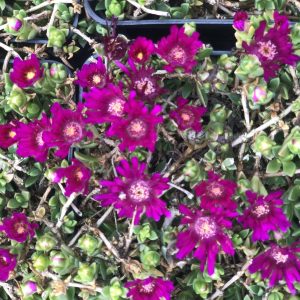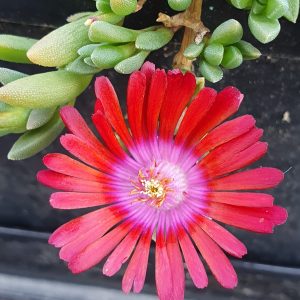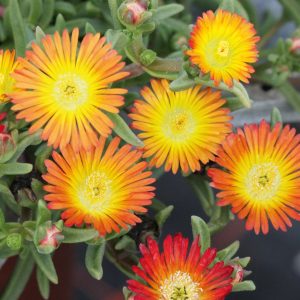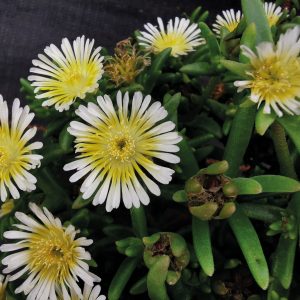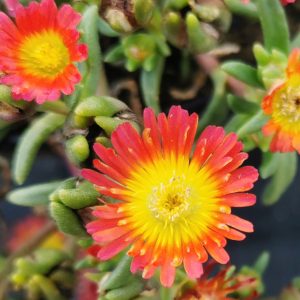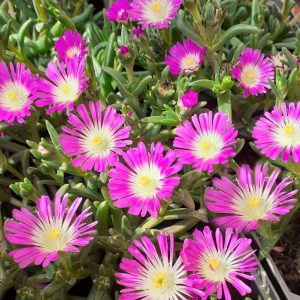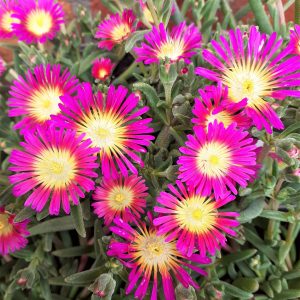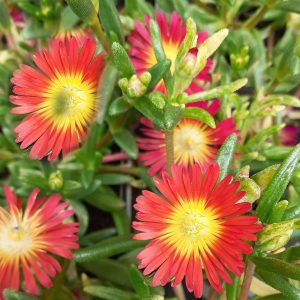Delosperma, commonly known as ice plants or hardy ice plants, are succulent perennials known for their vibrant, daisy-like flowers and ability to thrive in hot, dry conditions. Here’s a planting guide to help you grow and care for Delosperma plants.
Choose the Right Location
Delosperma plants prefer full sunlight. Select a location that receives at least 6-8 hours of direct sunlight per day.
Ensure well-draining soil to prevent waterlogged roots. Sandy or gravelly soil is ideal for these succulents.
Planting Time
Plant Delosperma in the spring or Autumn, when the soil is warm and workable. Avoid planting during the winter, as the plants may not establish well.
Soil Preparation
Improve soil drainage by adding sand or gravel if your soil tends to retain water.
Mix in organic matter, such as compost, to enhance fertility.
Planting Depth
Dig a hole slightly larger than the plant’s root ball.
Place the Delosperma plant in the hole at the same depth as it was in the container.
Spacing
Space plants about 12-18 inches apart to allow for spreading.
Watering
Water newly planted Delosperma regularly to help establish their roots. Once established, they are drought tolerant.
Water sparingly, allowing the soil to dry out between waterings. Overwatering can lead to root rot.
Mulching
Apply a layer of mulch around the plants to help retain soil moisture and suppress weeds. Use a gravel or stone mulch to prevent excess moisture around the plant base.
Fertilising
Delosperma plants don’t require much fertiliser. If the soil is poor, apply a balanced, slow-release fertiliser in the spring.
Pruning
Trim back dead or faded flowers to encourage continuous blooming and maintain a tidy appearance.
Winter Care
In regions with cold winters, Delosperma may benefit from a layer of mulch to protect them from frost. However, they are generally hardy in many climates.
Pests and Diseases
Keep an eye out for aphids and spider mites, common pests for succulents. Treat with insecticidal soap or neem oil if needed.
Ensure good air circulation to prevent fungal diseases.
Propagation
Delosperma can be propagated by seeds or cuttings. Collect seeds after flowering and sow them in a well-draining soil mix. Cuttings can be taken in the spring or early summer.
By following these guidelines, you can enjoy the vibrant colours and low-maintenance beauty of Delosperma plants in your garden. Adjust care based on your specific climate and soil conditions for optimal growth.




